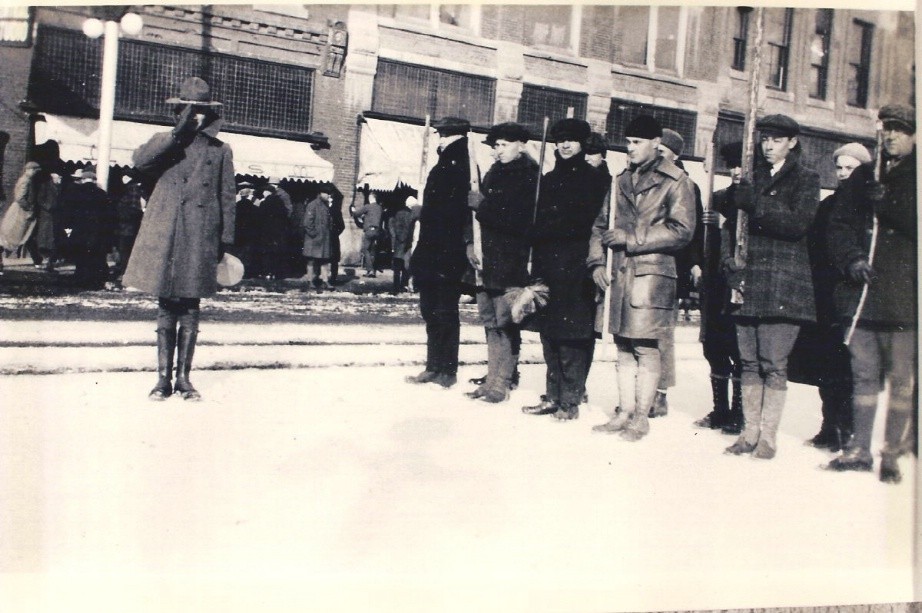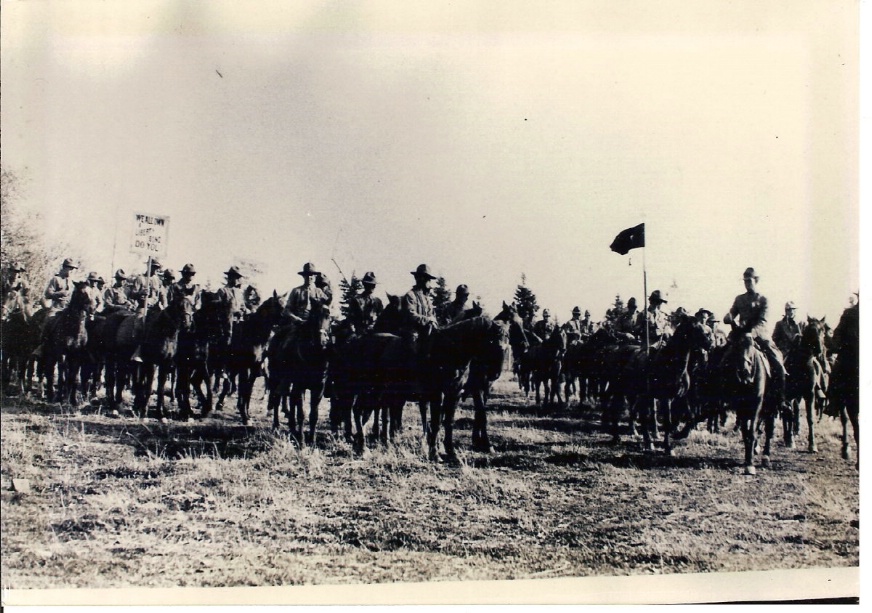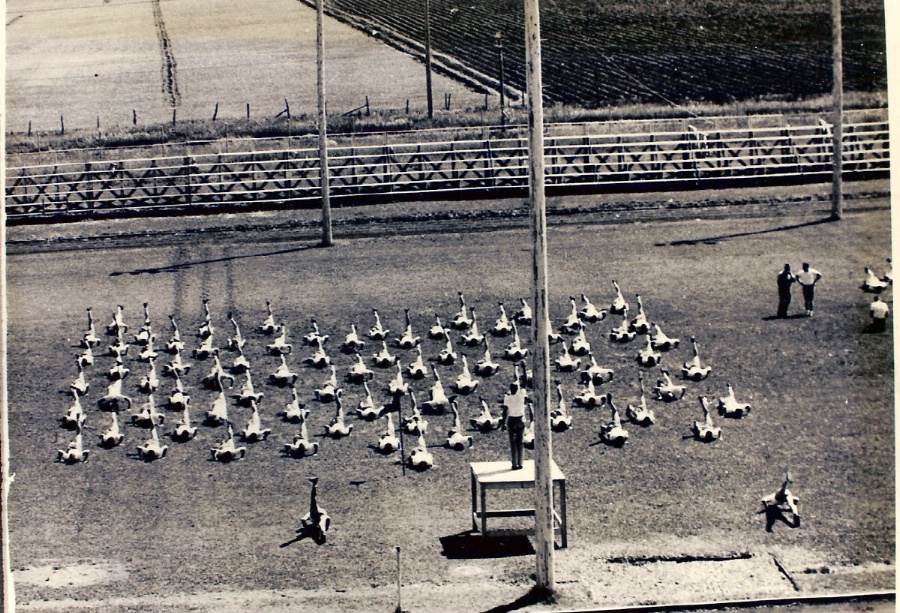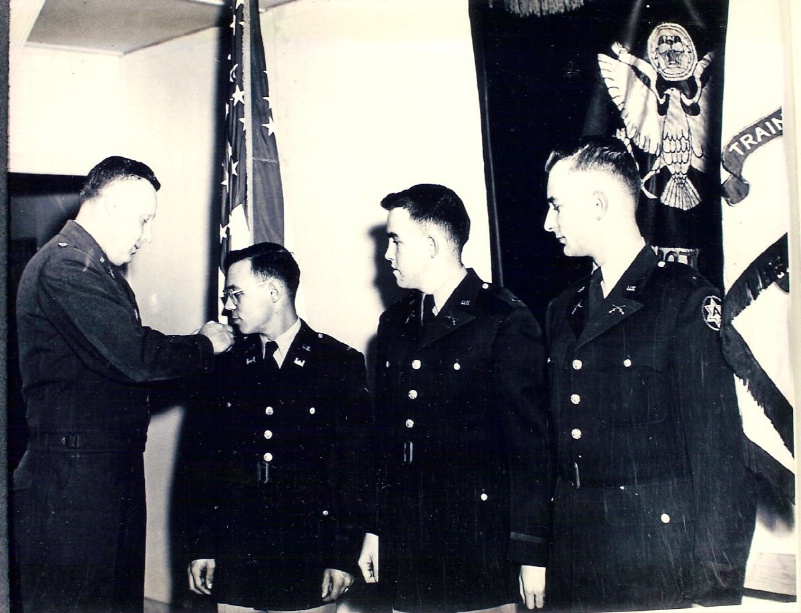Battalion History
 The Montana State University Army ROTC program started in 1896 with a parade of forty
cadets on their way to a ceremony where the governor of Montana laid the cornerstone
of Montana Hall. Professor William M. Cobleigh served as the first Professor of Military
Science in addition to his primary job as a college professor. In 1896, Lieutenant
George P. Ahern became the first officer assigned as the Professor of Military Science.
The ROTC department received Springfield rifles and two artillery pieces during his
tenure. Lieutenant Ahern taught courses of instruction in basic military science and
tactics and provided training on the military weapons available.
The Montana State University Army ROTC program started in 1896 with a parade of forty
cadets on their way to a ceremony where the governor of Montana laid the cornerstone
of Montana Hall. Professor William M. Cobleigh served as the first Professor of Military
Science in addition to his primary job as a college professor. In 1896, Lieutenant
George P. Ahern became the first officer assigned as the Professor of Military Science.
The ROTC department received Springfield rifles and two artillery pieces during his
tenure. Lieutenant Ahern taught courses of instruction in basic military science and
tactics and provided training on the military weapons available.
 At the outbreak of the Spanish-American War in 1898, Captain Ahern was promoted and
called back to regular Army service, leaving a void in ROTC instructors at MSU for
eighteen years. Between 1898 and 1903, several civilian instructors took on the role
of Professor of Military Science, but very little instruction focused on military
training except for drill and the ROTC band.
At the outbreak of the Spanish-American War in 1898, Captain Ahern was promoted and
called back to regular Army service, leaving a void in ROTC instructors at MSU for
eighteen years. Between 1898 and 1903, several civilian instructors took on the role
of Professor of Military Science, but very little instruction focused on military
training except for drill and the ROTC band.
 In 1916 the National Defense Act was passed, establishing a Reserve Officers Training
Corps in many schools throughout the nation. Montana State University was among the
land grant colleges designated as a Senior ROTC unit host and detailed as a Branch
Infantry ROTC unit. The course of instruction consisted of a basic course and an advanced
course. All able-bodied young men were required to successfully complete the two-year
basic course prior to graduation. The advanced course consisted of two more years
of instruction plus a six-week practical fieldwork summer camp. Enrollment in the
advanced course was voluntary and controlled by the War Department. Students who were
physically fit and had successfully completed both courses received their commission
as Infantry Second Lieutenants in the United States Army Reserve.
In 1916 the National Defense Act was passed, establishing a Reserve Officers Training
Corps in many schools throughout the nation. Montana State University was among the
land grant colleges designated as a Senior ROTC unit host and detailed as a Branch
Infantry ROTC unit. The course of instruction consisted of a basic course and an advanced
course. All able-bodied young men were required to successfully complete the two-year
basic course prior to graduation. The advanced course consisted of two more years
of instruction plus a six-week practical fieldwork summer camp. Enrollment in the
advanced course was voluntary and controlled by the War Department. Students who were
physically fit and had successfully completed both courses received their commission
as Infantry Second Lieutenants in the United States Army Reserve.
The first Professor of Military Science under the National Defense Act was Captain Hollis C. Clark. He was assisted by Sergeant Fred Bloss. The War Department provided an Army program of instruction, training aids, uniforms, and equipment in support of training objectives.
 In 1952 the creation of the U.S. Air Force from the Army Air Corps changed the way
Montana State University trained ROTC cadets. Montana State University was redesignated
as a branch General Military Science program, replacing the previous Branch Infantry
program. Under the new GMS program, students could now apply for a commission in any
combat arms or technical service branch.
In 1952 the creation of the U.S. Air Force from the Army Air Corps changed the way
Montana State University trained ROTC cadets. Montana State University was redesignated
as a branch General Military Science program, replacing the previous Branch Infantry
program. Under the new GMS program, students could now apply for a commission in any
combat arms or technical service branch.
In 1964 the ROTC Vitalization Act was passed, increasing the ROTC cadet pay scale and providing for both two- and four-year college scholarships to deserving applicants. It also
allowed for the ROTC basic course to be taught on a voluntary basis for the first time since 1916. In 1967 the MSU Rifle team won the National ROTC Rifle Championship, topping 243 colleges and universities nationwide.
Today, Montana State Army ROTC continues to grow as a successful organization that supports the campus and local community. What started as a group of 40 cadets in 1896 has become a professional organization consisting of 125 cadets in the Fall of 2024 that continues to forge the next generation of leaders and officers for the United States Army.
